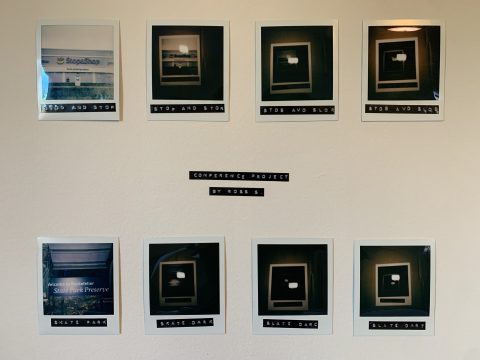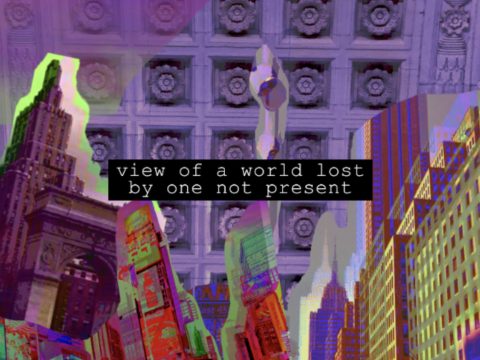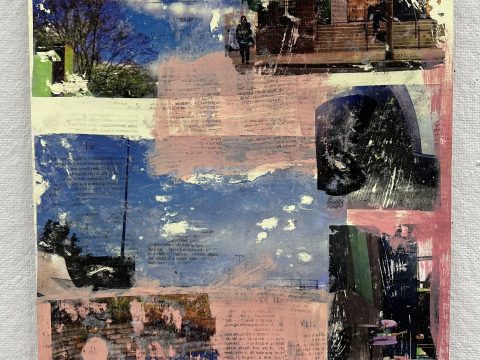Throughout our lives we might find ourselves seeing the same images time and time again, to the point of monotony. Due to this repetition, it can be difficult to remember the difference between the moments and scenes you passingly see in your everyday life. This is a visual map of my everyday life, made with images of scenes spanning the course of about five weeks.
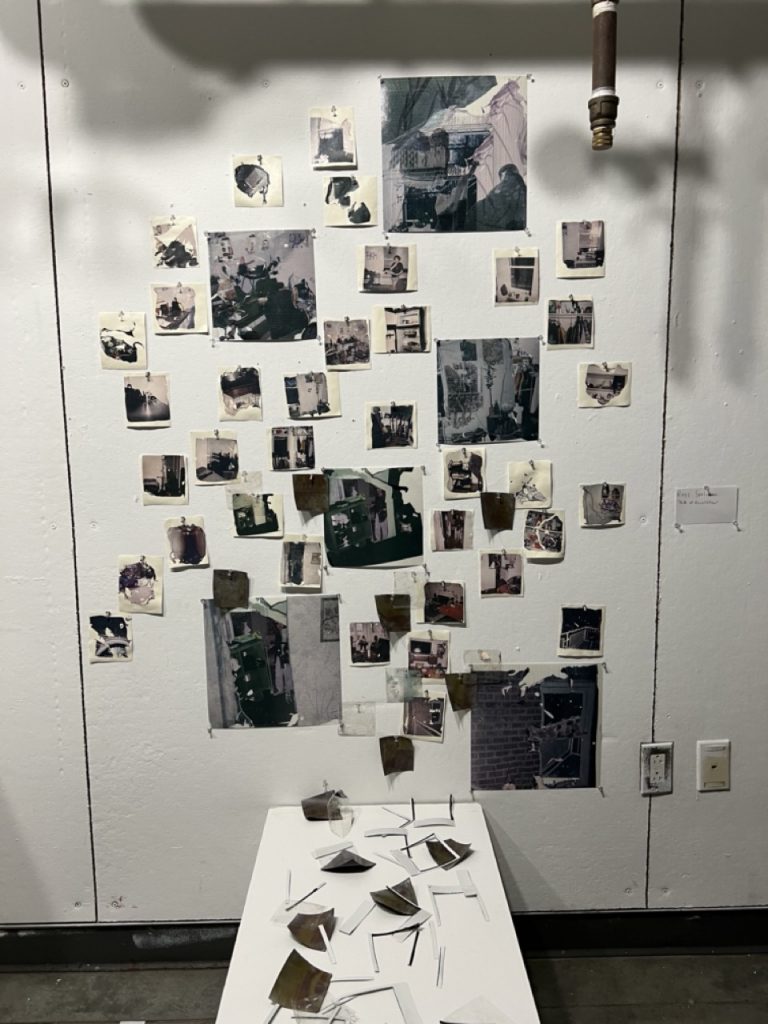
Since the beginning of the Cultural HiJack class, we have heavily discussed and contemplated the idea of memory. How do we as people remember? What do we remember, and what might we forget? For my conference work, I really wanted to experiment with actively engaging with my own daily memory. Like much of my earlier work in the semester, this project was very process-based. The map consists of countless image transfers of polaroid photos onto canvas, each one taking anywhere from 30 minutes to an hour to complete, and six larger printed images which are pieced together with the fragments of imperfect smaller transfers. The images show a journey throughout my apartment and everyday spaces taken in the passing moments of my life, which I would not have taken the time to specifically remember otherwise. In going through the process of transferring these images, I force myself to recall each scene.
The image transfer process I used throughout this project is called polaroid emulsion transferring. In this process, a polaroid picture is cut open, allowing you to delicately separate the different layers of the picture, exposing the emulsion layer in the center, which shows the image itself. In water, the emulsion layer is carefully lifted off of the backing layer and is stretched out and pieced together again on a piece of canvas. This process, in total, took anywhere from thirty minutes to an hour for each photo. It was through destroying the original picture and going through the process of reconstructing it that I went through the exercise of recalling specific scenes.
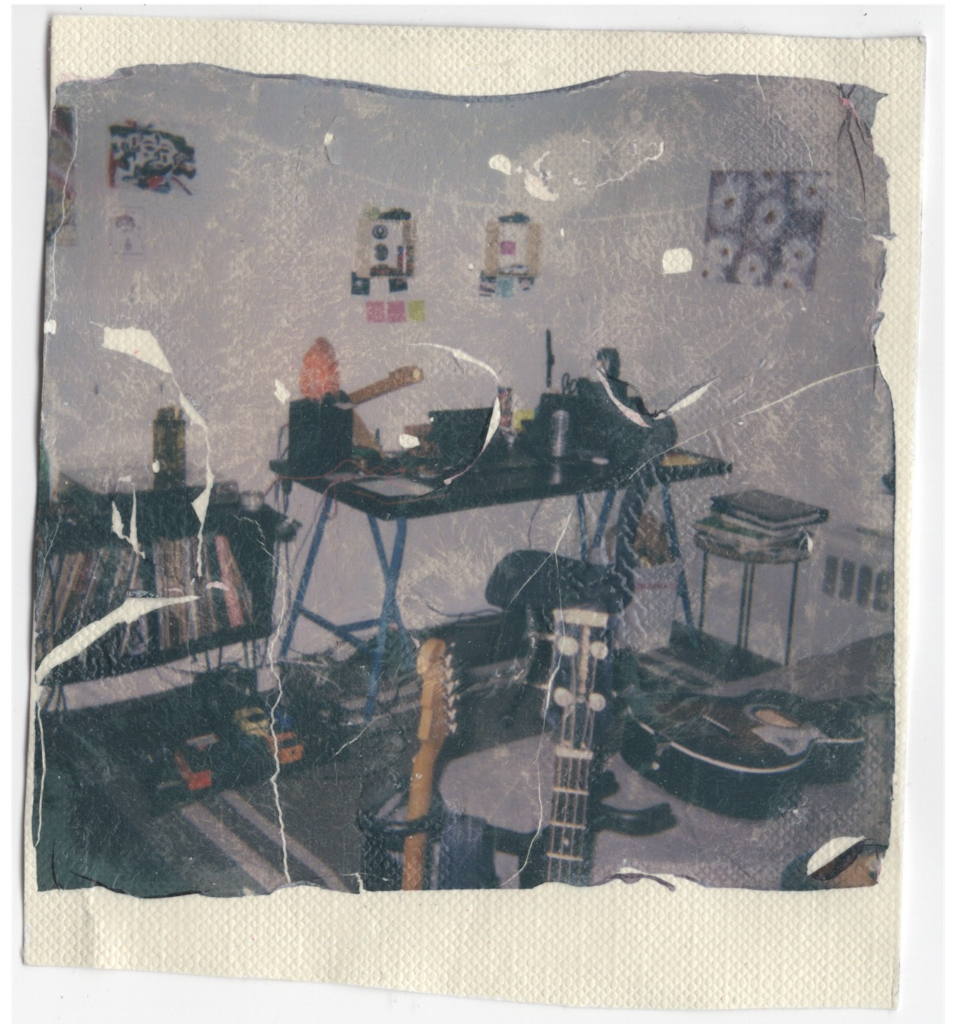
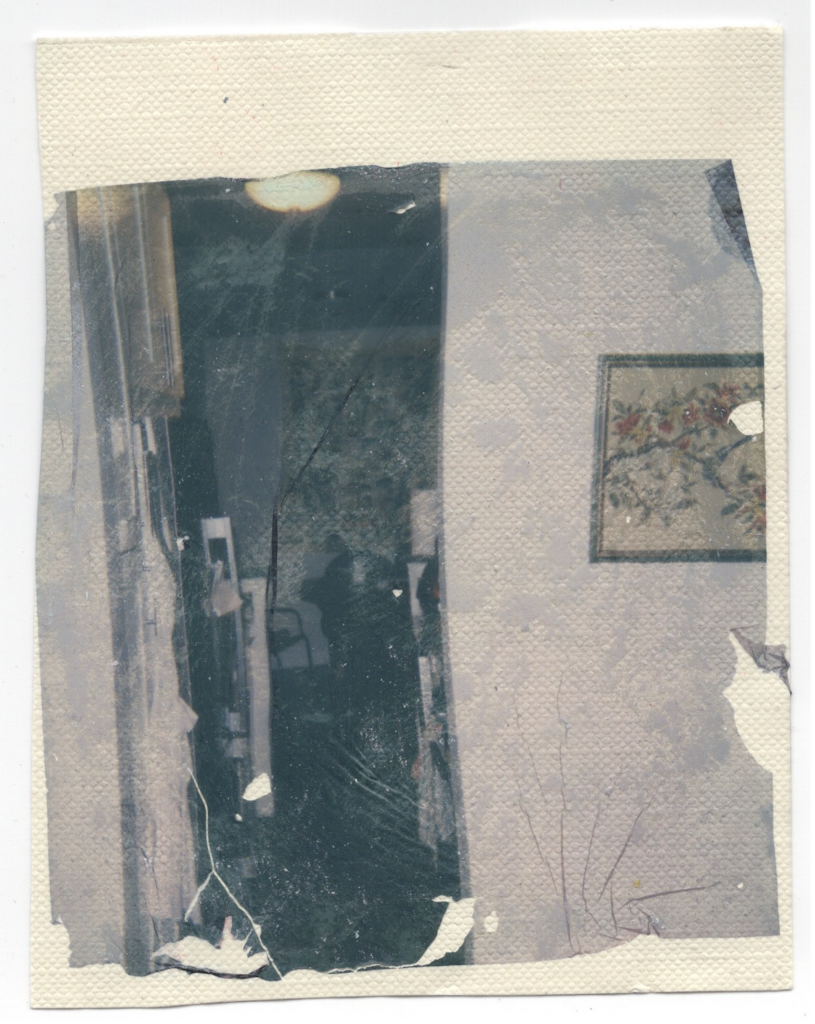
While I became better at this process over time, many of the transfers came out with imperfections, missing pieces of the image, or did not come out at all. I decided to take these imperfect and incomplete transfers and photo scan them into my computer. Using photoshop, I was able to further piece together the fragments of broken images to complete a more full scene. However, this time the fragments used were taken from photos multiple days and weeks apart from one another, farthing the distortion of these memories. These photoshopped images were enlarged and printed on photo paper.
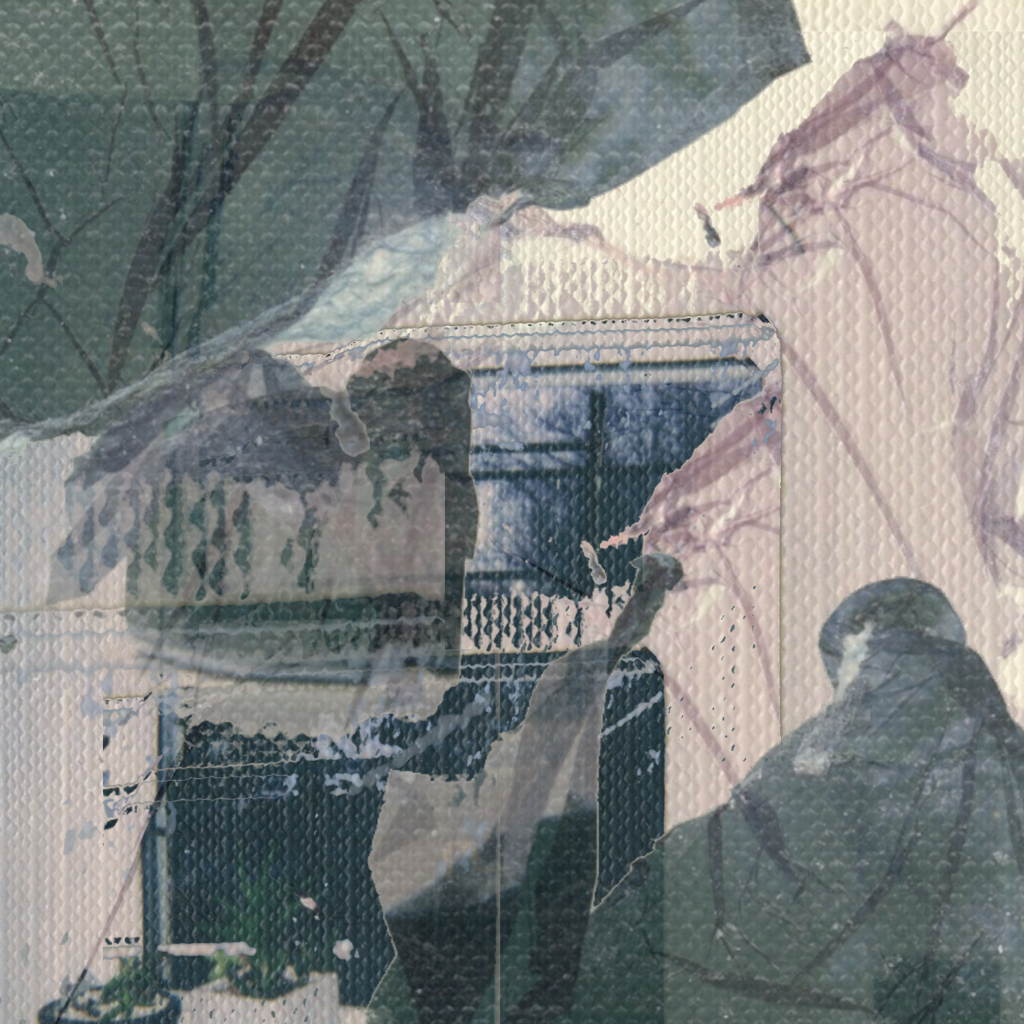

When installing this work, I had a general idea of a certain flow I was looking for in the layout. I first pinned up the large images to the wall. The smaller transfers fell into place and flowed in through the gaps between the large images. They are in no chronological order, yet follow a specific geographical path from my furthest window to the balcony of my apartment. As I got closer to the floor, I realized that many of the images were gradually becoming darker and slightly more distorted. I used scraps and leftover pieces from one of my last batches of image transfers to fade in and be placed on a horizontal pedestal, protruding into the room. This helped to give more context to the actual image transfer process and highlight the destructive nature of the work.
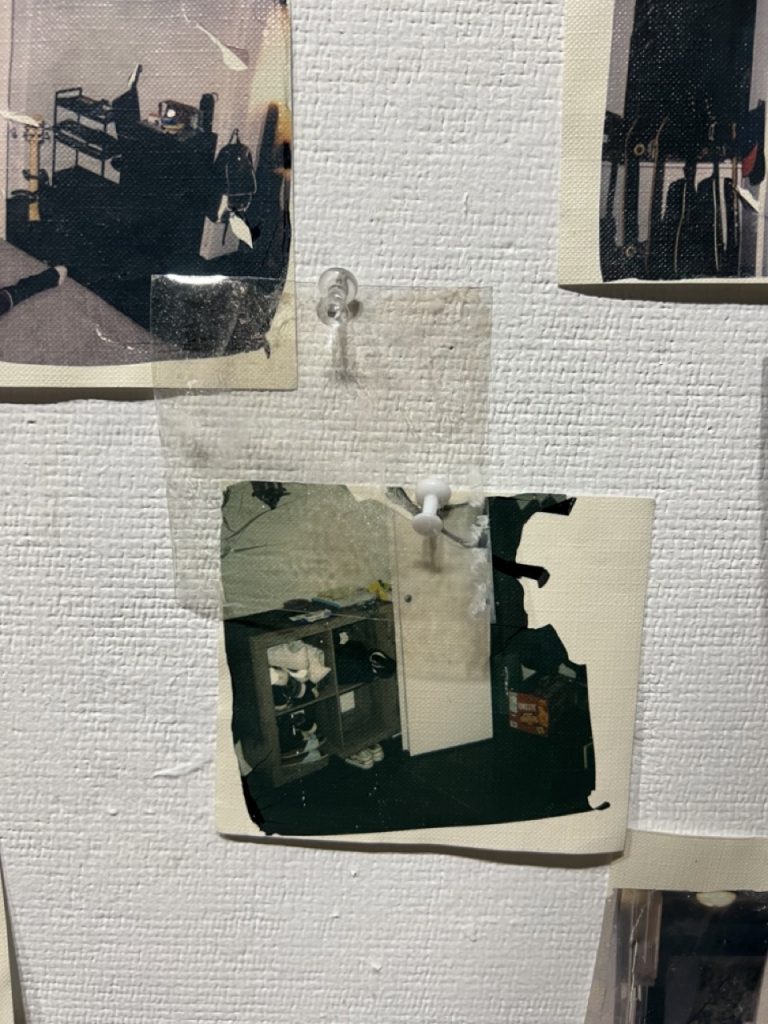

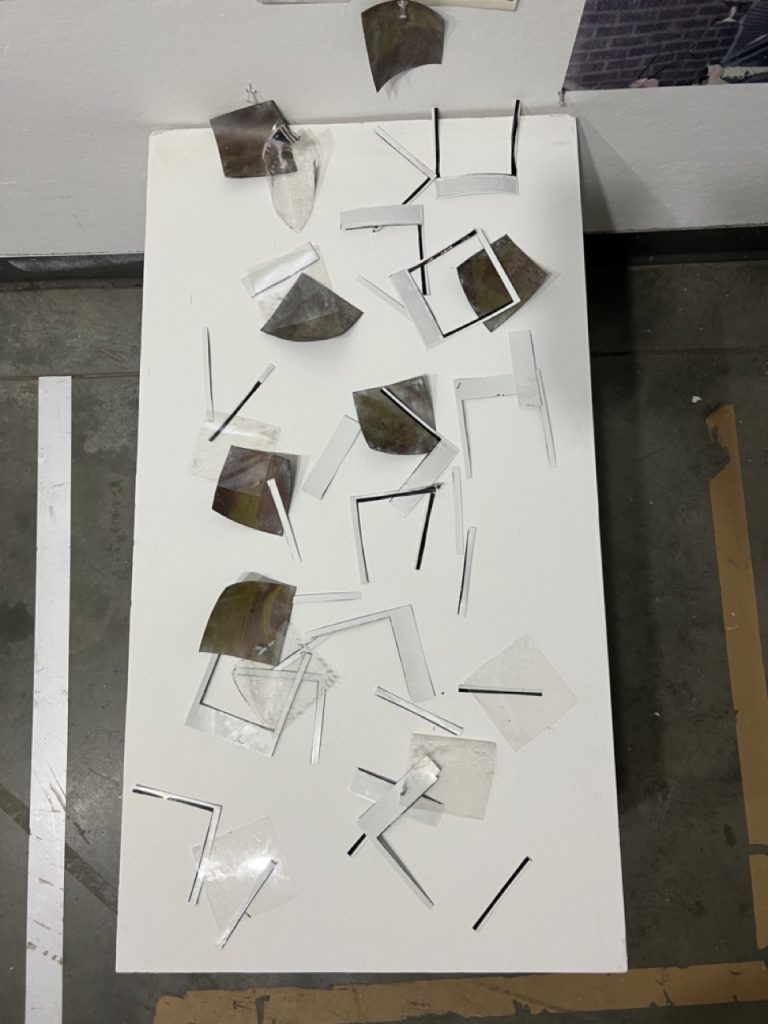
To me, this project was a long term experiment with my own memory. Each photo taken a scene from my everyday life of the subjects and places that I see regularly. Despite being images of the things and places I see countless times every day, there are slight differences in your everyday surroundings from time to time. The process of transferring these images, cutting them open, and destroying the original photo only to piece it back together again, forced myself to recall the minute details of these images. What was on my desk the day of a specific photo? Did I leave anything on my windowsill? Where did I place my glass of water? These were some of the questions I went through asking myself through the process of transferring each image.
